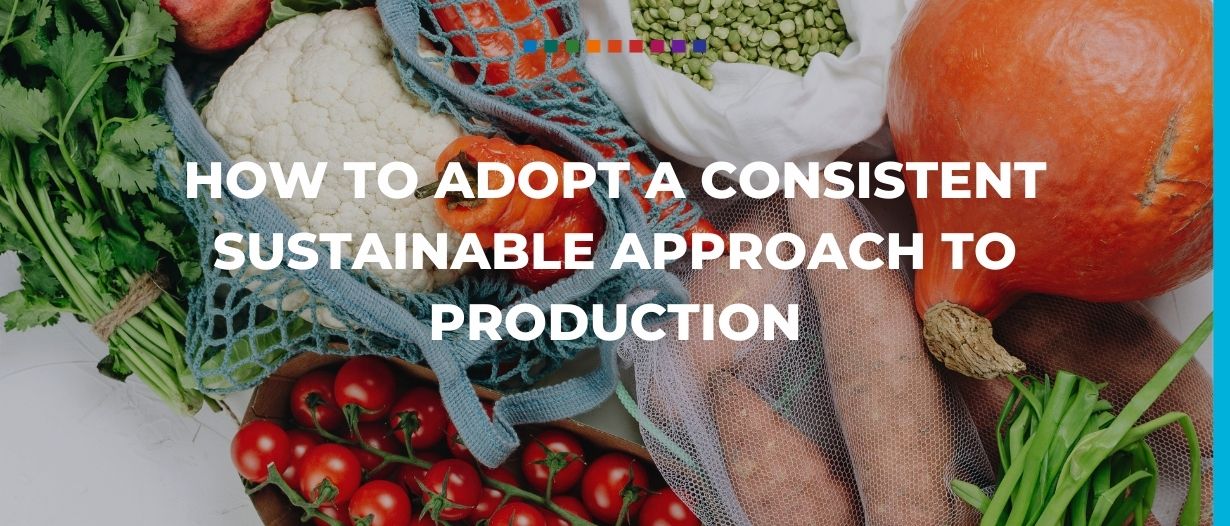Sustainability is a hot topic around the world, with almost all industries impacted by the need to operate in a greener and cleaner way. But it’s not as easy as waving a magic wand and instantly reducing a company’s carbon footprint.
With supply chains causing an estimated 90% of a business’s environmental impact, it’s clear that there is ample room for improvement in the production process. So let’s look at how it’s possible to adopt a consistent, sustainable approach to production through good supply chain management.
Where do businesses start?
The best place to start refining a supply chain is to spend some time identifying where sustainable improvements across the entire chain can be made. This could be through unnecessary waste, excess carbon emissions, poor labor conditions, worker exploitation or poor health and safety practices.
Break down the supply chain into its base elements and start identifying inefficiencies. For example, logistics and haulage will emit emissions so it’s a good place to start to see where improvements can be made. The obvious elements are easy to identify but what about more unknown quantities like the working conditions of suppliers?
It’s important to look out for standardized working systems like those created by ISO (International Organization for Standardization). This establishes a set of working guidelines that follow best practices; for sustainability look out for ISO 14001, which holds suppliers to strict environmental standards.
Sustainable development goals
Rome wasn’t built in a day and businesses shouldn’t expect their operations to become instantly sustainable in the short term. Instead, it’s important to embrace long-term thinking and planning by setting sustainable development goals. Reflecting on the 2030 Agenda on sustainability that all 17 UN Member States agreed to in 2015, it’s worth considering that there are varying rates of long-term success depending on the sector involved and their roadmap to reach particular goals. Businesses dealing in raw materials, oil, and mined materials may require different approaches to reaching their sustainability targets with varying levels of expectation.
This long-term approach to creating a sustainable production and supply chain helps to keep things consistent as companies won’t be jumping from bandwagon to bandwagon in the pursuit of energy efficiency. There are also organizational and business benefits to adopting a sustainable model due to the value people place on saving the planet.
From enhancing your reputation and attracting staff to complying with governmental requirements and ultimately saving money, sustainability is making waves across most business sectors. With tax relief for green companies, reduced operating costs and becoming an attractive investment opportunity for green investors, the sustainable business is now a profitable one.
Circular economy: prolonging the product life cycle
Many supply chains are concerned with materials, which are commonly shipped to their destinations to be used in the production or manufacturing process. Those created products are then distributed to consumers and often once used they are discarded.
Unfortunately, too much of the world’s consumption is with single-use products but companies can embrace a circular economy within certain elements of their supply chain. Focusing on a circular economy means finding ways to reuse products, and this can be done by creating new uses for used products or returning them to their manufacturers.
The goal of a circular economy is to reduce waste, or eliminate it if possible. This is through two new steps in the supply chain; recycling and reusing.
For example, Rachel Thompson, Head of Sustainability at MPB, a used camera marketplace embracing the circular economy says, “reusing products and materials over much longer time periods and through multiple owners and users creates additional financial value and supports a wide variety of skills and jobs”. She adds, “So the circular approach is environmentally, socially and financially sustainable”.
Using the right supply chains
No matter what a company intends on producing, it can clean up and improve its supply chain. Once inadequacies in the chain have been identified it’s important to improve or remove them entirely. For example, when delivering goods a company could consider allowing a delivery from a third party to be placed on its fleet vehicle, rather than returning empty-handed. By bringing materials back, this journey becomes more energy efficient.
Another useful practice is for companies to engage with suppliers and third parties to start a conversation about sustainability. It doesn’t mean a company must stamp its feet and demand suppliers become energy champions but businesses can reward sustainable practices within their third party relationships.
For example, pledging more business if certain sustainable methods are introduced or even sharing the costs of sustainability improvements can incentivize companies to make changes.
Why make the supply chain sustainable?
Besides being the socially responsible thing to do, improving the sustainability of the supply chain makes financial sense. For starters, it can reduce running costs despite the initial outlays. Becoming more energy efficient isn’t just something to shout about, it means becoming more energy-efficient and therefore saving money and reducing waste.
A sustainable supply chain can be a diverse one with positive relationships being developed with several suppliers; meaning that companies no longer rely on just one supplier. If there are supply chain issues with one, another can step in and help companies to pick up the slack.
As the supply chain accounts for a huge portion of a company’s carbon footprint, future laws will dictate that sustainability is put at the forefront of it. Adopting sustainable supply chains allows companies to introduce more impactful changes to their carbon footprints. Through a long-term approach, small improvements can be made piece by piece while maintaining that consistent vision of making the world a better place.
With world events becoming more unpredictable and putting businesses at risk of supply chain issues, financial flexibility is key. From knowing how much businesses can borrow from the government to investment plans, getting supply chain finance right is more important than ever.
The common good
There are three main elements of supply chain sustainability: social, environmental and financial responsibility. Each of these elements looks to improve the world around us, looking out for the common good. The UN is championing good practices and is working hard to help businesses become more environmentally friendly through its Sustainable Development Goals.
This is one of the UN’s core goals with a 2030 target for a substantial reduction in waste generation through the prevention, recycling, reducing and reusing of as many materials as possible. It also aims to promote environmentally friendly procurement practices and to encourage large companies to put sustainability in the spotlight of their activities.
Sustainable manufacturing
Improving the sustainability of a company’s supply chain is a big step towards being a carbon-neutral, or even positive, business. However, the supply chain is somewhat out of the control of an individual company but what is very much down to them is how they produce their goods or services.
Sustainable production processes can increase operational efficiency, increase a company’s competitive advantage and build trust in its brand. This also means that future regulatory changes won’t be as hard to adapt to as a sustainable manufacturing process is more likely to already be closely aligned with the latest developments.

































